Semaglutide Meal Plan Secrets: What Nobody Tells You About Eating on GLP-1 Medication

Table of Contents
- The Real Story Behind Your Changing Body
- Making Every Bite Count When You’re Eating Less
- Your Brain on Semaglutide: The Mental Game Nobody Talks About
- Building a System That Works Beyond the Medication
TL;DR
- Semaglutide slows your digestion by 2-4 hours, completely changing how you should time and structure meals
- With 60-70% less food intake, nutrient density becomes critical to prevent deficiencies that could sabotage your progress
- The “food noise” silence creates both opportunities and challenges that require new eating frameworks
- Strategic meal planning during treatment sets you up for long-term success even after stopping the medication
- Quality supplements become essential when eating significantly less food
The Real Story Behind Your Changing Body
Look, most people focus on what foods to eat while on semaglutide, but here’s what I wish someone had told me upfront: understanding how this medication completely rewrites your body’s hunger and digestion patterns is way more important than any specific diet plan. Your stomach empties slower, your hormones go haywire, and even your gut bacteria changes – which means all that traditional diet advice you’ve heard? Yeah, throw it out the window.
This isn’t just about feeling less hungry. We’re talking about working with a completely transformed digestive system. According to research, semaglutide is administered subcutaneously once a week with dosage guidelines that can vary between 1.7mg per week and 2.4mg per week, helping patients achieve significant weight loss results when combined with proper nutrition planning. Creating an effective eating strategy means acknowledging that your body operates under entirely new rules.
I spent weeks fighting against these changes before I realized I needed to work with them instead. Trust me, it’s so much easier when you stop swimming upstream.
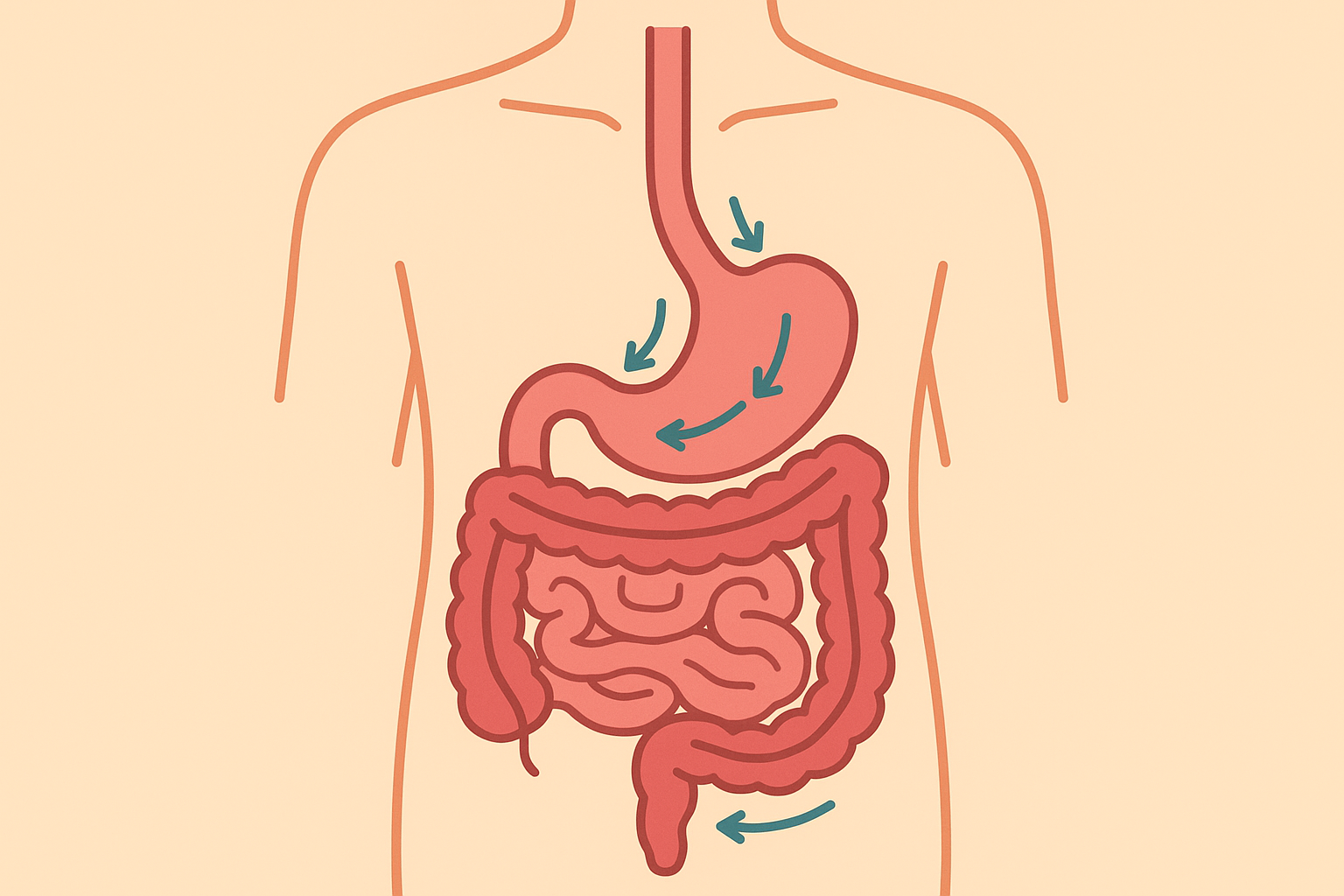
When Your Stomach Becomes a Slow Cooker
Here’s the thing nobody warns you about: semaglutide doesn’t just make you less hungry – it literally slows down how fast food leaves your stomach. We’re talking about extending digestion from the normal 2 hours to sometimes 4-6 hours. It’s like your stomach decided to become a slow cooker overnight.
This creates a domino effect that changes everything about meal timing, portion sizes, and what foods you can actually handle. Recent medical insights show that semaglutide works by slowing the movement of food through the stomach and intestines, which in turn helps you feel fuller longer and cause weight loss – PeaceHealth, making proper meal timing more critical than ever before.
I discovered this through some pretty uncomfortable trial and error – and trust me, you don’t want to learn this lesson the hard way like I did.
The Four-Hour Rule That Changes Everything
Here’s what shocked me most: that breakfast you ate at 8 AM? It might still be hanging out in your stomach when lunchtime rolls around at noon. I learned this the embarrassing way when I ate my usual turkey sandwich at lunch and felt uncomfortably stuffed until 6 PM. That’s when it hit me – my morning eggs were still taking up residence in there!
This extended time that food sits in your stomach means you need to completely rethink meal spacing and portion sizes. I had to track my personal patterns and gradually extend meal intervals to prevent that awful “stuffed to the gills” feeling that so many people experience.
| Meal Timing Strategy | Traditional Approach | What Actually Works Now | Key Benefits |
|---|---|---|---|
| Breakfast to Lunch | 3-4 hours | 4-6 hours | Prevents overcrowding stomach |
| Lunch to Dinner | 4-5 hours | 5-7 hours | Optimizes digestion efficiency |
| Evening Cutoff | 2 hours before bed | 3-4 hours before bed | Improves sleep quality |
| Portion Size | Standard serving | 30-50% smaller | Matches slowed gastric emptying |
Why Protein Timing Became My Secret Weapon
With slower digestion, protein becomes even more powerful for sustained energy and keeping you satisfied, but the timing and type matter way more than before. I discovered that front-loading protein in my first meal and choosing easily digestible sources works better than trying to spread it throughout the day.
Heavy proteins combined with fats can sit in your slowed digestive system for what feels like forever. Instead of having a heavy steak dinner that sits like a rock in your stomach, I started my day with 2 scrambled eggs and Greek yogurt (about 25g protein total), then stuck to lighter protein sources for later meals. Game changer.
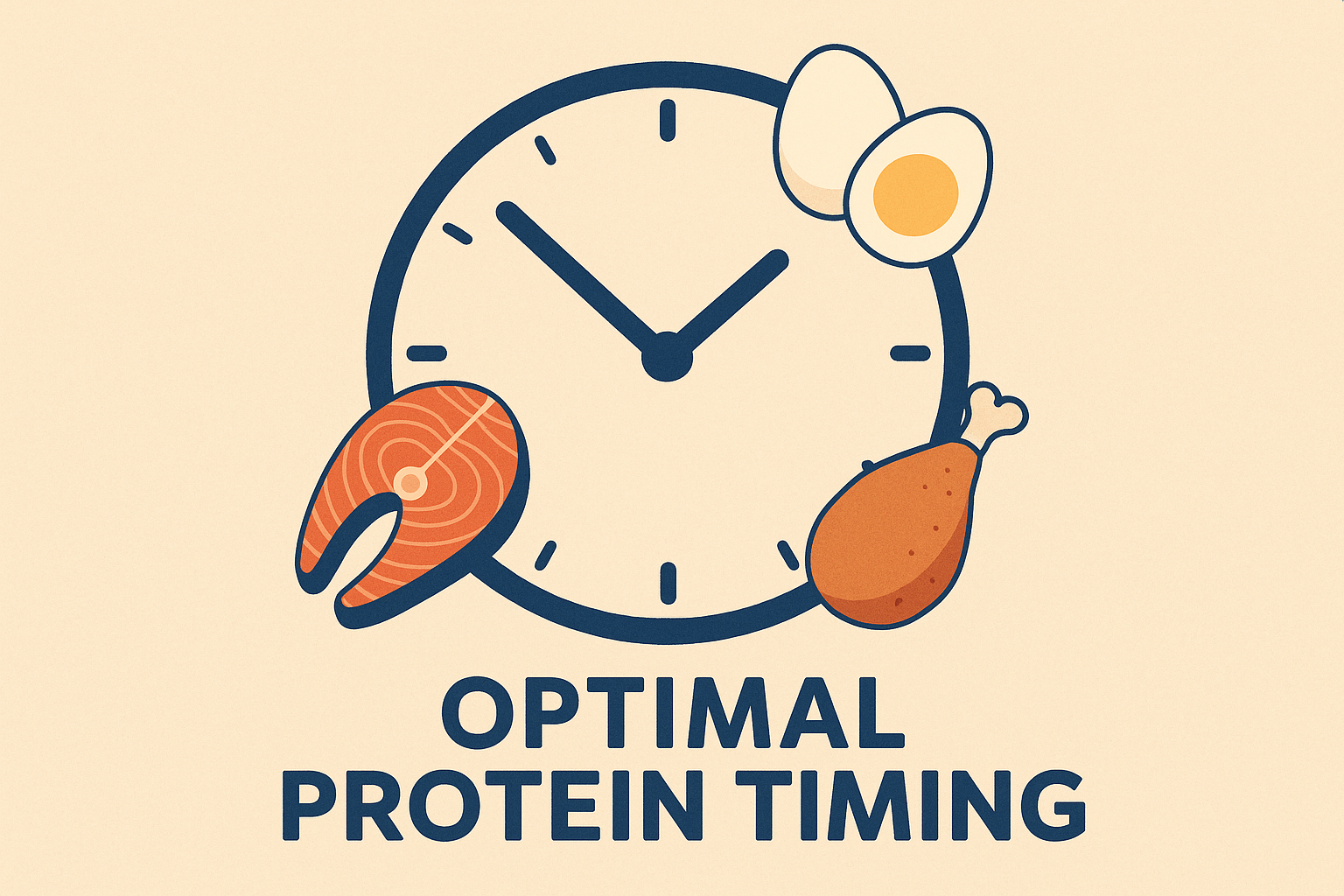
Your Hormones Are Having a Party (And You’re Invited)
Semaglutide mimics GLP-1, but here’s what they don’t tell you – this triggers a whole cascade of hormonal changes affecting how your body handles insulin, your hunger hormones, and even brain chemicals that control mood and cravings. These changes create incredible opportunities for fine-tuning your metabolism, but only if you understand what’s happening and adjust accordingly.
I noticed these changes within the first few weeks, but it took me way longer to understand how to actually use them to my advantage.
Blood Sugar Becomes Predictably Unpredictable
Your body becomes way more sensitive to insulin, which means your blood sugar responses become more predictable but also more sensitive to what you eat. This actually creates an amazing opportunity to fine-tune your metabolism through smart food combinations.
I used a continuous glucose monitor for a few weeks (total game changer, by the way) and discovered patterns I never knew existed. The data was eye-opening – foods I thought were healthy were causing unexpected spikes, while some combinations kept my energy rock-steady all day.
When Your Brain Chemistry Shifts Gears
Here’s something wild: GLP-1 receptors in your brain affect the same pathways that control dopamine and serotonin, which can completely change your food preferences and emotional eating patterns. I started craving totally different foods and noticed my mood around eating shifted dramatically.
I had to start supporting my brain’s neurotransmitter production through omega-3s, B vitamins, and magnesium. Plus, timing meals to support my natural daily rhythm improved my sleep quality too – something I definitely hadn’t expected from a weight loss medication.
Your Gut Bacteria Gets a Makeover
Semaglutide significantly changes your gut bacteria composition, and these little microbes can either help amplify your weight loss success or work against you depending on how you feed them. Certain bacterial strains thrive under semaglutide’s influence, but they need the right fuel to help you maximize the medication’s benefits.
I wish someone had told me about this connection earlier in my treatment – it would’ve saved me some uncomfortable digestive issues.
Feeding Your New Microbial Friends
Supporting gut health becomes super important during semaglutide treatment, and understanding how drinking vinegars can benefit digestive health provides additional tools for optimizing your microbiome.
I learned that gradually introducing prebiotic-rich foods and rotating different fermented foods weekly helps diversify the beneficial bacteria that support weight loss. However, artificial sweeteners can totally mess with this delicate balance, so I had to completely rethink my approach to satisfying sweet cravings.
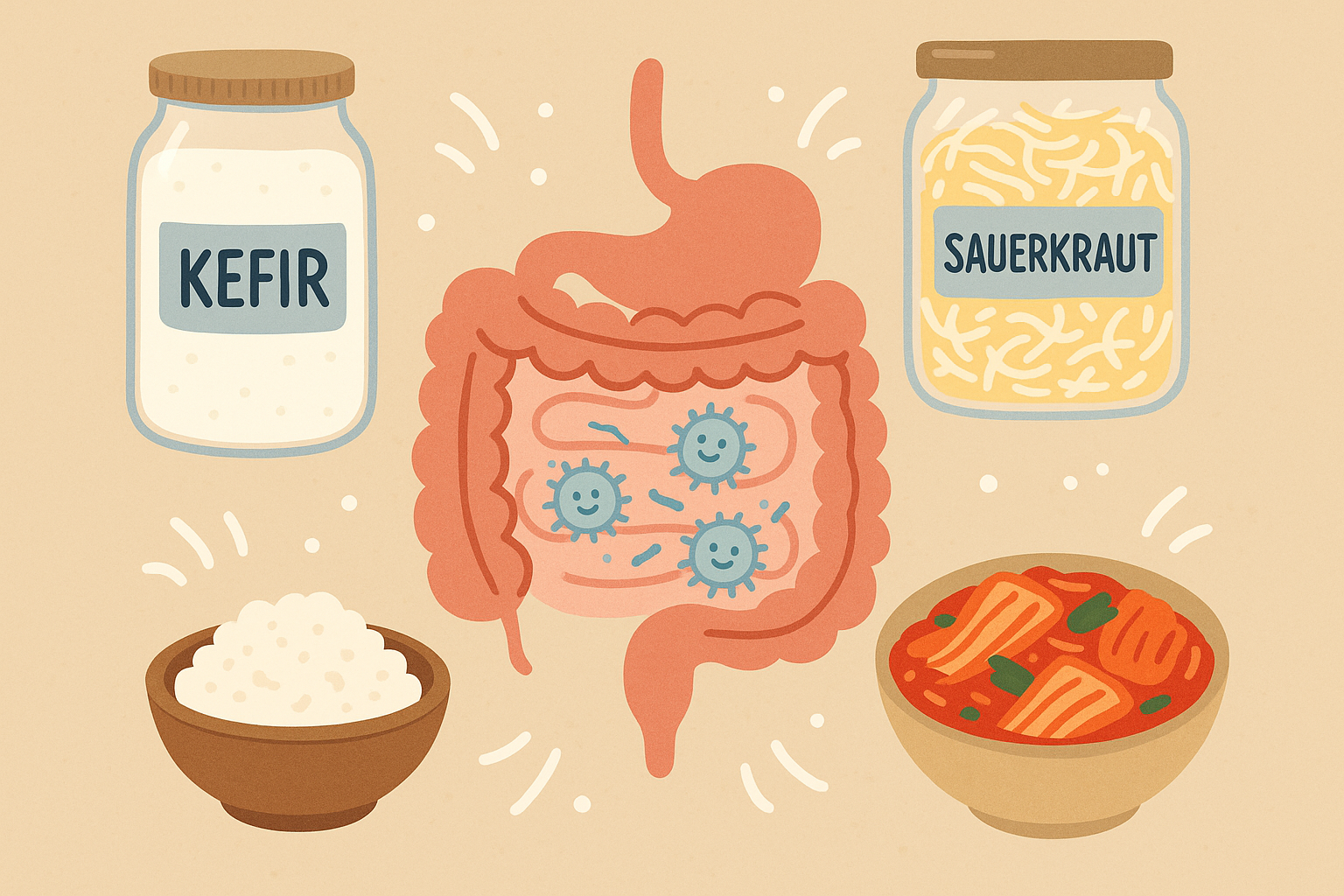
Making Every Bite Count When You’re Eating Less
When you’re naturally eating 60-70% less food, all that traditional portion control advice becomes completely useless. Every single bite needs to deliver maximum nutritional value to prevent deficiencies that could totally derail your progress and leave you feeling like garbage.
This isn’t about restricting yourself – it’s about precision nutrition that supports your body’s new efficiency while keeping you healthy and energized. Research shows that individuals should aim for 20-30 grams of protein per meal when following this approach, as protein intake combined with regular activity ensures weight loss comes primarily from fat, not muscle – Pinnacle Health Spa.
I had to completely rewire my thinking about what makes a “good” meal. Quality over quantity became my new mantra.
Turning Small Meals Into Nutritional Powerhouses
With dramatically reduced food intake, the focus shifts entirely to nutrient density rather than counting calories. I had to learn how to create meals that pack more nutrition into smaller volumes than I ever thought possible.
This means understanding how well your body can actually use the nutrients, strategic food combining, and choosing the most nutrient-dense options available. Every food choice becomes an investment in how you’re going to feel.
Essential Nutrient Density Checklist:
- Include at least one high-quality protein source per meal
- Add 2-3 different colored vegetables for varied micronutrients
- Include healthy fats for nutrient absorption (avocado, olive oil, nuts)
- Choose complex carbohydrates over simple sugars
- Rotate protein sources weekly to ensure amino acid variety
- Include fermented foods 3-4 times per week
- Prioritize organic options when possible for cleaner nutrition

The Art of Nutrient Absorption Hacking
Combining specific nutrients can dramatically increase how well your body absorbs them, making smaller meals way more nutritionally powerful than larger traditional meals. Pairing vitamin C with iron-rich foods, including healthy fats with fat-soluble vitamins, and separating competing nutrients became total game-changers for getting the most out of my limited food intake.
Here’s a real example: to maximize iron absorption from spinach, I pair it with bell peppers (vitamin C) and cook it in a cast-iron pan with a small amount of olive oil. I avoid drinking coffee or tea with this meal since they can block iron absorption, and I save my calcium-rich Greek yogurt for a different meal. Small changes, huge difference in how I feel.
When Your Stomach Acid Takes a Vacation
Slower digestion can reduce stomach acid production, which makes it harder to absorb minerals just when you need them most. Including natural digestive aids and choosing easily absorbed mineral supplements helped me avoid the fatigue and mood swings that can signal deficiencies creeping in.
Apple cider vinegar with meals became a regular part of my routine. The difference in how I felt after meals was noticeable within just a few days.
Fighting Inflammation While You Transform
Semaglutide’s anti-inflammatory effects create an incredible opportunity to amplify weight loss and metabolic improvements through smart food choices. With limited stomach space, choosing foods with the highest anti-inflammatory potential becomes crucial for supporting your body’s enhanced healing state.
I noticed that when I prioritized anti-inflammatory foods, my energy levels stayed way more consistent throughout the day, and I just felt better overall.
Polyphenol Power in Tiny Packages
Deeply colored plant foods, herbs, and spices became my go-to sources for concentrated anti-inflammatory compounds. Maximizing these compounds becomes essential when eating less, and understanding how to choose the healthiest greens powder can help supplement your reduced food intake with concentrated nutrients.
I started rotating different colored vegetables weekly and choosing organic when possible to maximize variety while avoiding inflammatory pesticide residues that could work against semaglutide’s benefits.
| Anti-Inflammatory Food Category | Top Choices for Small Portions | Polyphenol Density | Best Preparation Method |
|---|---|---|---|
| Berries | Blueberries, blackberries, goji berries | Very High | Fresh or frozen, avoid added sugars |
| Leafy Greens | Arugula, kale, spinach | High | Light sauté with olive oil |
| Herbs & Spices | Turmeric, ginger, oregano | Very High | Fresh when possible, add to cooking |
| Colorful Vegetables | Purple cabbage, beets, bell peppers | High | Raw or lightly steamed |

Your Brain on Semaglutide: The Mental Game Nobody Talks About
Here’s what nobody warned me about: the most overlooked aspect of meal planning on semaglutide is the profound psychological shift that happens when food thoughts quiet down. This creates both incredible opportunities and unexpected challenges that require intentional navigation to prevent rebound effects and build habits that last beyond the medication.
Medical experts are recognizing that <a href="https://www.first
Medical experts are recognizing that the first thing you should notice is a slight reduction in food noise and cravings – First for Women, making the psychological aspects of treatment just as important as the physical changes.
I was completely unprepared for how different my relationship with food would become. It’s honestly both amazing and a little scary.
When Food Noise Goes Silent
The disappearance of constant food thoughts can be both liberating and totally disorienting. Many people experience a form of “eating amnesia” where they forget to eat or completely lose touch with their hunger cues.
This requires developing new frameworks for meal structure that don’t rely solely on feeling hungry. Unlike traditional approaches, you have to account for these completely altered psychological responses to food.
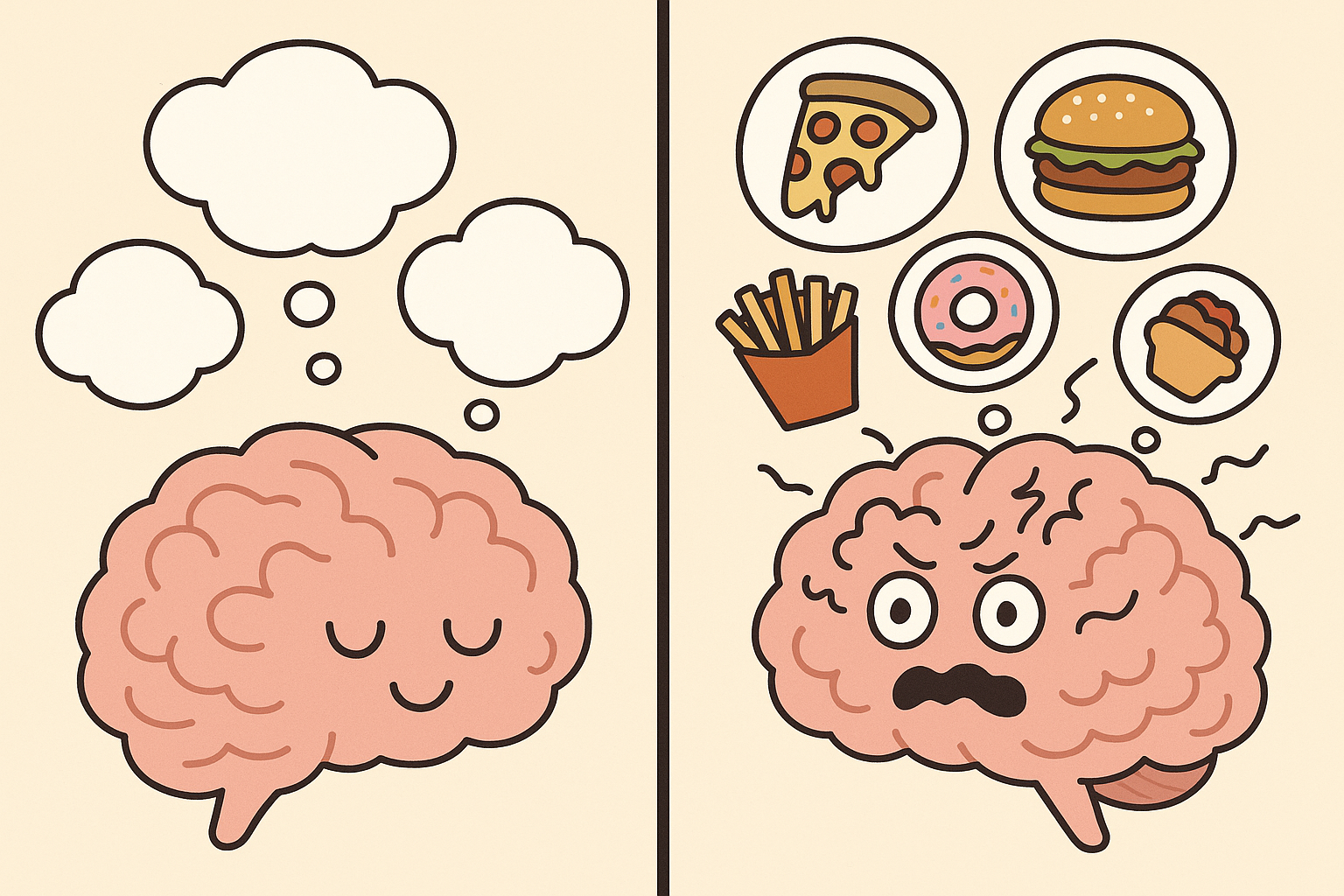
Relearning Hunger in a Medicated Body
Traditional intuitive eating advice doesn’t account for when medication changes how hungry you feel, so I had to develop a hybrid approach combining medical awareness with body attunement. Learning to eat without relying on hunger cues requires structure, similar to how intuitive eating principles need adaptation when appetite signals are changed by medication.
I started setting structured meal reminders and practicing mindful eating techniques to help me distinguish between medication-suppressed hunger and true satisfaction while rebuilding trust in my body’s signals.
Hunger Retraining Protocol:
- Set phone reminders for meal times (don’t rely on hunger cues alone)
- Practice 3 mindful bites at the start of each meal
- Rate hunger and fullness on a 1-10 scale before and after eating
- Keep a brief food and mood journal for 2 weeks
- Gradually extend time between meals as your body adapts
- Notice non-hunger eating triggers (stress, boredom, social situations)
Navigating Your Evolving Food Identity
Rapid weight loss and dramatically changed eating patterns can trigger identity shifts that affect every meal planning decision. I had to consciously work through my evolving relationship with food and body image while building patterns that felt authentic rather than medication-dependent.
This psychological adaptation turned out to be the most challenging aspect of maintaining success long-term. When I realized I no longer craved my former comfort foods, I had to redefine what “treating myself” meant. Instead of food-based rewards, I started celebrating progress with new activities and trying restaurants known for their healthy, creative dishes.
The journey forced me to examine why I ate certain foods and what role food played in my emotional life. This introspection was unexpected but ultimately really valuable.
Building Habits That Outlast the Prescription
Creating meal patterns that serve you both during treatment and beyond requires thinking past the medication timeline. Creating sustainable eating patterns requires addressing the emotional aspects of food, much like understanding how body tension relates to emotional health helps create holistic wellness approaches.
I focuse I focused on developing cooking confidence, food preparation skills, and social eating strategies that aligned with my new patterns while remaining flexible enough to adapt as my body changed.

Building a System That Works Beyond the Medication
The ultimate goal isn’t just losing weight during treatment – it’s creating a sustainable wellness framework that takes everything you learned during semaglutide therapy and turns it into a lifelong approach to health. The metabolic improvements can create lasting changes, but only when supported by complementary practices that reinforce these positive adaptations.
Studies indicate that participants who took 2.4 mg of semaglutide lost between 5-6 percent of their body weight in 12 weeks – First for Women, demonstrating the importance of building sustainable systems to maintain these results long-term.
Having a comprehensive transition strategy becomes invaluable for long-term success. I wish I had created this roadmap earlier in my journey. Your eating plan needs to evolve into something that works without pharmaceutical support.
Creating Metabolic Memory That Sticks
Here’s what I discovered: semaglutide’s metabolic improvements can have lasting effects, but only when combined with evidence-based wellness practices that create benefits extending far beyond weight management. Stress management, sleep optimization, and movement patterns that complement improved insulin sensitivity all play crucial roles in maintaining progress.
Your eating strategy should evolve into a comprehensive lifestyle approach that supports these metabolic changes. The medication gives you a window of opportunity, but what you build during that time determines your long-term success.

The Compound Effect of Clean Nutrition
When you’re eating significantly less food, quality becomes everything – every bite must deliver maximum nutritional value while supporting natural healing processes. Quality supplementation becomes essential when eating less, and understanding which daily supplements provide the most benefit helps fill nutritional gaps that are difficult to meet through reduced food intake alone.
This is where choosing organic, clean supplements becomes essential rather than optional. Your meal strategy must account for these nutritional gaps that emerge when food volume decreases dramatically.
Bioavailable marine collagen supports skin, hair, and nail health during rapid weight loss, while plant-based supplements fill nutritional gaps that are nearly impossible to meet through reduced food intake alone. Organic Authority’s rigorous evaluation program ensures you’re getting products that deliver results without artificial additives or questionable ingredients.
When your digestive system processes food more slowly and efficiently, choosing supplements that meet strict standards of authenticity and clean ingredients becomes crucial for optimal results.
Long-Term Success Framework:
- Establish consistent meal timing that works with your natural rhythm
- Develop 5-7 go-to recipes that meet your nutritional needs
- Create a support system that doesn’t revolve around food-centered activities
- Build cooking skills that make healthy eating enjoyable, not restrictive
- Develop stress management techniques that don’t involve emotional eating
- Establish sleep hygiene practices that support metabolic health
- Create movement routines that feel sustainable rather than punitive
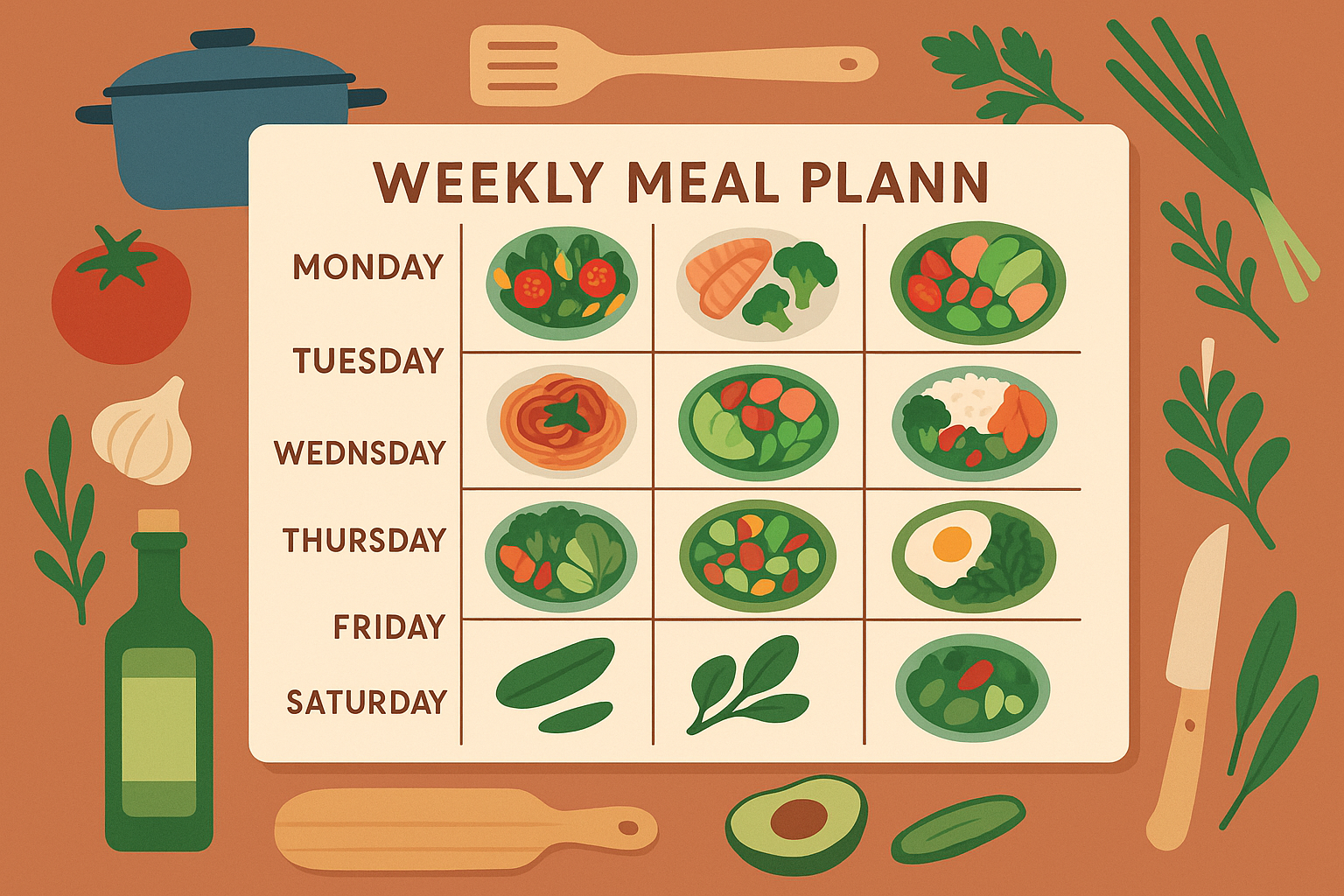
Post-Medication Transition Checklist:
- Gradually increase portion sizes while maintaining nutrient density
- Monitor weight and energy levels during transition period
- Adjust meal timing as natural hunger cues return
- Continue prioritizing protein and fiber intake
- Maintain supplement routine established during treatment
- Keep food journal for first 3 months post-medication
- Schedule regular check-ins with healthcare provider
- Have contingency plan for weight regain prevention

Final Thoughts
Navigating meal planning on semaglutide taught me that this medication offers a unique opportunity to reset not just your weight, but your entire relationship with nutrition. The physiological changes – from how long food sits in your stomach to hormonal rebalancing – require a completely different approach than traditional dieting advice.
What surprised me most was how the psychological shifts proved just as important as the physical ones. When food noise quiets and eating patterns change dramatically, building sustainable habits becomes both easier and more complex than I expected.
Quality over quantity becomes non-negotiable when you’re eating 60-70% less food. Every nutrient choice matters more, every supplement decision carries greater weight, and every meal becomes an opportunity to support your body’s transformation with precision nutrition.
I’ll be honest – six months ago, I never thought I’d be the person who forgets to eat lunch. This medication didn’t just change my weight – it completely rewired my relationship with food. Some days that feels amazing, other days it’s honestly a little scary. But I’m learning to trust this new version of myself.
Remember, semaglutide is giving you a window to rebuild your relationship with food from the ground up. Make it count by choosing the highest quality nutrition possible – exactly when your body needs it most. A well-structured eating plan isn’t just about losing weight—it’s about creating lasting health transformation.

